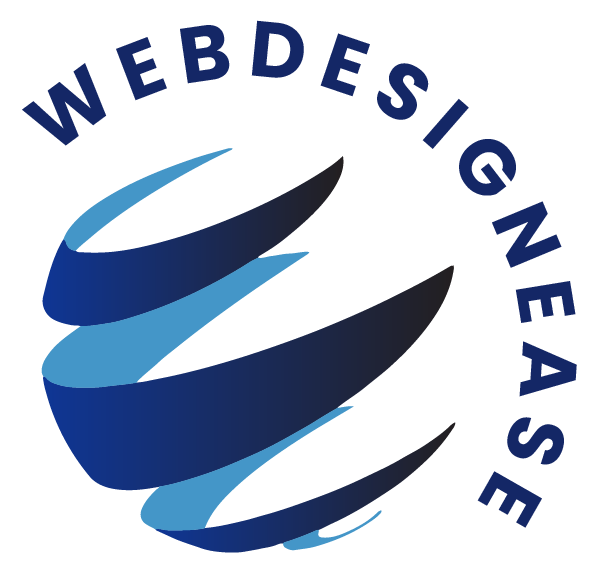
UI/UX design plays a pivotal role in shaping the overall user experience of a website. A well-crafted user interface (UI) ensures that users can navigate the site effortlessly, find what they need quickly, and interact with elements intuitively. Meanwhile, user experience (UX) design focuses on understanding users' behaviors, needs, and preferences to create a seamless and satisfying journey throughout the website. Effective UI/UX design enhances engagement, increases retention, and fosters positive perceptions of the brand. Conversely, poor UI/UX design can lead to frustration, confusion, and ultimately, abandonment of the site. Therefore, investing in thoughtful UI/UX design is essential for creating a compelling digital presence and fostering lasting relationships with users.
Comprehensive Approach to UI/UX Design
The comprehensive approach to UI/UX design design embodies an intricate blend of artistry and analytical thinking, pivotal in sculpting digital interfaces that are as aesthetically appealing as they are user-friendly. This methodology unfolds across several crucial phases, beginning with empathy-driven user research that lays the groundwork for understanding the target audience's needs and behaviors. Following this, the ideation process takes center stage, where creativity and strategy converge to generate innovative concepts and solutions. Wire framing and prototyping then translate these ideas into tangible, interactive models, enabling iterative testing and refinements to enhance usability and user satisfaction. Throughout, collaboration among designers, developers, and stakeholders ensures that every aspect of the user experience is thoughtfully considered, from the visual design and layout to the navigation and interaction design. This holistic approach not only ensures the creation of functional digital products but also crafts engaging and intuitive experiences that resonate deeply with users, ultimately setting the foundation for the project's success.
Discovery and Research Phase:
The initial phase is all about understanding the users, their needs, behaviors, and pain points. This involves a variety of research methods such as surveys, interviews, and observation. The goal is to gather as much relevant information as possible to inform the design process. Creating personas and user journey maps can help synthesize this information, providing a clear guide for the design direction.
Design and Prototyping Phase:
This phase translates the insights gained during discovery into tangible design solutions. Designers create wireframes, mockups, and prototypes to visualize the user interface and test the usability of the concepts. This iterative process involves refining ideas based on feedback and usability testing to ensure that the final design meets user needs and business goals.
Implementation and Evaluation Phase:
After finalizing the design, the next step is to work closely with developers to ensure the vision for the UI/UX is accurately translated into a functioning website. Post-launch, the website's performance is closely monitored through user feedback and analytics. This ongoing evaluation may reveal areas for further improvement, indicating the cyclical, iterative nature of the UI/UX design process.
The Role of Emotional Design in UI/UX
Emotional design delves into creating products that elicit positive emotions from users, thereby enhancing their overall experience. This approach goes beyond mere usability, aiming to connect with users on a deeper level. For instance, incorporating elements that surprise and delight users, such as unexpected animations or personalized greetings can significantly enhance the emotional appeal of a website. Emotional design can foster a stronger attachment to a brand and encourage prolonged engagement with a website.
Emotional design
Micro interactions are subtle moments centered around accomplishing a single task, such as liking a post, refreshing a page, or changing a setting. Despite their size, they play a significant role in enriching the user experience by providing feedback, aiding in task completion, and adding a layer of interactivity to the website. When thoughtfully designed, micro interactions can significantly enhance the usability and feel of a website, making routine tasks more engaging and intuitive.
Advanced Technologies Shaping UI/UX
The rapid advancement of technology continuously reshapes the possibilities within UI/UX design. Technologies such as artificial intelligence (AI) and augmented reality (AR) are pushing the boundaries of traditional web design, offering new ways to create immersive and interactive user experiences.
Artificial Intelligence in Personalization
AI can analyze user data to deliver customized content and recommendations, making the user experience more personalized and relevant. For example, AI algorithms can suggest articles, products, or services based on the user's past behavior, significantly enhancing the user's engagement with the website.
Augmented Reality for Interactive Experiences
AR technology can transform the user experience by blending virtual objects with the real world, offering interactive and immersive experiences. This is particularly impactful in industries like retail, where AR can allow users to visualize products in their own space before making a purchase decision.
Global Accessibility and UI/UX Design
Accessibility in UI/UX design ensures that websites are usable by people of all abilities and disabilities. This involves designing websites that are navigable and usable for users with various impairments, including visual, auditory, motor, and cognitive disabilities. Incorporating accessibility into the design process not only broadens the reach of a website but also reflects a commitment to inclusivity, ensuring that all users, regardless of their physical or cognitive abilities, can have a positive experience on the website.
Ethical Considerations in UI/UX Design
Ethical design is becoming increasingly important in the digital age. This involves respecting the privacy and rights of users, designing for well-being, and avoiding manipulative design practices. Ethical UI/UX designers are mindful of the impact their designs have on users and strive to create experiences that are not only engaging but also respectful and beneficial to the user.
Conclusion
Expanding on the importance of UI/UX design in creating engaging and effective websites reveals the complexity and depth of this field. From the initial research phase to the final implementation and beyond, every step in the design process is crucial for crafting digital experiences that meet and exceed user expectations. By embracing emotional design, prioritizing accessibility, and considering the ethical implications of their work, UI/UX designers play a pivotal role in shaping the digital landscape. As technology continues to evolve, so too will the possibilities for creating innovative, user-centered designs that push the boundaries of what digital experiences can be. Investing in UI/UX design is not just about improving a website's aesthetic appeal; it's about creating a more intuitive, enjoyable and meaningful online world for everyone.


 +1 (469) 663-5095
+1 (469) 663-5095